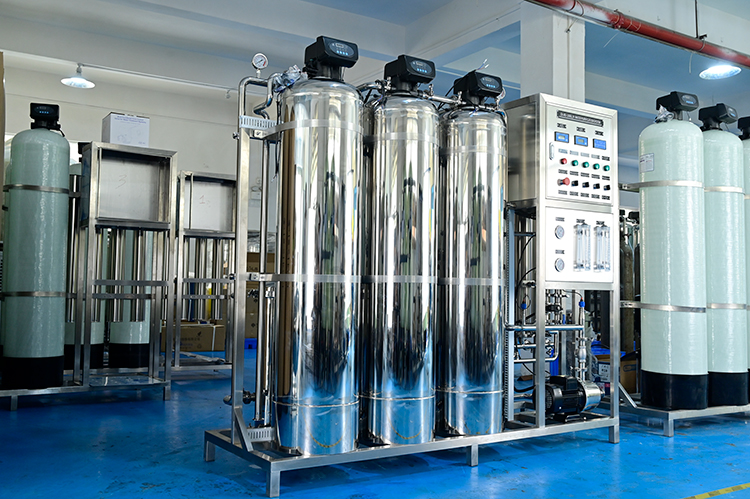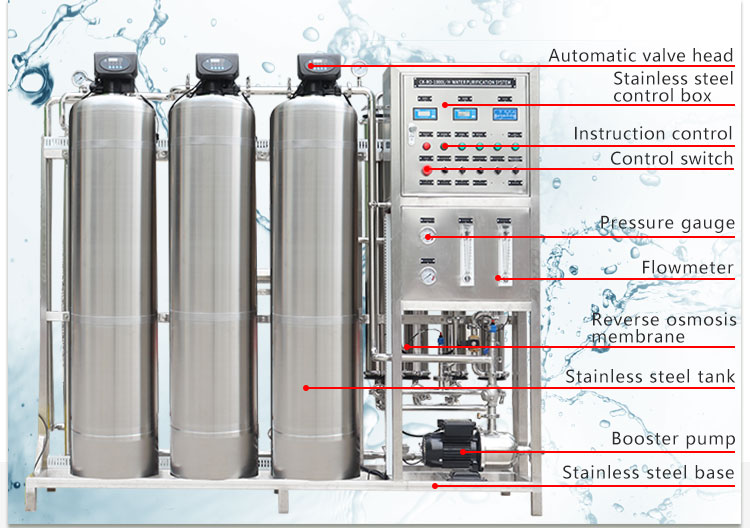What are the most common water treatment methods?
Introduction: Water is an important resource for human survival and development, but due to the influence of various pollution factors, many water sources are polluted to varying degrees. Therefore, water treatment methods have become an important means to ensure the safety and quality of people's drinking water. This article will focus on water treatment methods, introduce the most common water treatment methods, and further explore their effects, advantages and disadvantages in practical applications.
What are the most common water treatment methods?
The most common water treatment methods include boiling, filtering, and using water treatment equipment. These methods are widely used worldwide to ensure the quality and safety of drinking water.
1. Boil: Boiling water for at least one minute will kill most bacteria, viruses, and parasites that may be present. This method is simple and easy to do, especially suitable for emergencies. However, boiling does not remove chemical contaminants, so this method is of limited effectiveness for chemically contaminated water sources.
2. Filtration: Water filtration is a method of removing impurities from water through a filter. Filters can be physical or chemical filters that remove suspended particles, bacteria, viruses, and chemicals. This method is widely used in domestic and industrial fields and can effectively improve water quality.
3. Use water treatment equipment: For example, reverse osmosis technology is an advanced water treatment method that uses semipermeable membranes to separate dissolved solids and impurities in water from water molecules. Reverse osmosis technology removes salt, heavy metals and other chemical contaminants from water, providing high-quality drinking water.

What are the advantages and disadvantages of each of these water treatment methods?
Each water treatment method has its advantages and disadvantages, and the appropriate method can be selected based on actual needs and water quality conditions.
1. Advantages and disadvantages of boiling:
Advantages: The boiling method is simple, economical, kills most microorganisms, and is suitable for emergency and household use.
Disadvantages: Unable to remove chemical contaminants, boiling may result in some mineral loss, and is time consuming and fuel intensive.
2. Advantages and disadvantages of filtration:
Advantages: Filtration can effectively remove suspended particles, bacteria and some chemicals in the water, and improve the color, taste and smell of the water. Depending on the filter, it can be customized to handle different types of contaminants.
Disadvantages: Filters need to be replaced regularly, which can be costly. Some filters cannot remove all chemical contaminants.
3. Advantages and disadvantages of using water treatment equipment:
Advantages: Water treatment equipment such as reverse osmosis can remove a variety of pollutants, including salts, heavy metals, chemicals, etc., providing high-quality drinking water.
Disadvantages: The equipment costs more and may require professionals to install and maintain.

What are the characteristics of boiling, filtration and reverse osmosis technologies?
Boiling, filtration and reverse osmosis technology are three common water treatment methods, each with its own characteristics and scope of application.
First of all, boiling is a simple and easy water treatment method suitable for camping, traveling and emergency situations. Boiling can effectively kill bacteria, viruses and parasites in the water, ensuring the safety of drinking water. However, boiling cannot remove chemical contaminants from water and is therefore of limited effectiveness in treating chemically contaminated water sources.
Secondly, water filtration is a common water treatment method suitable for removing suspended solids and large particle impurities from water. Filter selection depends on the type and size of contaminants that need to be removed. Physical filters trap impurities on the surface through screens or fiber materials, chemical adsorbers use chemicals to absorb impurities, and biological filters use microorganisms to break down organic matter into harmless substances.
Finally, reverse osmosis technology is an advanced water treatment method suitable for deep purification of water sources. It separates water molecules from solution through a semipermeable membrane, removing dissolved solids and other contaminants, producing clean, safe drinking water. The advantages of reverse osmosis technology are high treatment efficiency and good purification effect, but the equipment cost is high and the maintenance costs are also high.
How to choose the appropriate water treatment method according to your needs?
Selecting the appropriate water treatment method requires an evaluation based on specific needs and water quality conditions. Here are some suggestions for choosing a water treatment method:
1. Assess water quality: First, understand the water quality of local water sources, including the content of microorganisms, chemicals and suspended particles. Based on the water quality assessment results, determine the types of pollutants that need to be focused on treatment.
2. Consider actual needs: Choose water treatment methods based on actual needs. If it is only for emergency or temporary use, you can choose the boiling method. If used at home, you can consider using a filter, especially choosing different types of filters based on water quality.
3. Comprehensive consideration of costs and effects: The selection of water treatment methods must comprehensively consider costs and effects. The methods of boiling and filtering are relatively economical, but equipment such as reverse osmosis, although more expensive, is more effective and can provide high-quality drinking water.
4. Regular maintenance and replacement: Any water treatment method you choose requires regular maintenance and replacement of equipment or accessories to ensure the sustainability of the water treatment effect.

Summary: The most common water treatment methods include boiling, filtering, and using water treatment equipment. Each method has its own advantages and disadvantages, and the appropriate water treatment method needs to be selected based on water quality conditions and actual needs. As technology continues to advance, more efficient water treatment methods will continue to emerge, providing people with a better source of drinking water. By rationally selecting and maintaining water treatment methods, the safety and quality of people's drinking water can be ensured and living standards improved.




